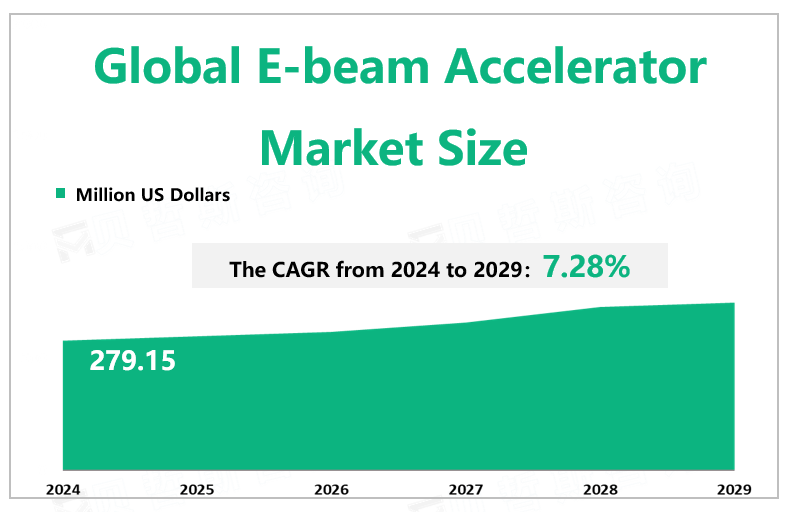Global E-beam Accelerator Market Overview
According to Global Market Monitor, the global e-beam accelerator market size will be $279.15 million in 2024 with a CAGR of 7.28% from 2024 to 2029.
Electron Beam technology can modify the physical, chemical, molecular, and biological properties of materials and products, improving their usefulness and enhancing their value. Electron beam accelerator (E-beam Accelerator) is widely used for industrial applications such as surface curing, crosslinking of wires and cables, and sterilization/ decontamination of pharmaceutical products. The energy of the electron beam determines the type of application. This is due to the penetration power of the electron that is limited by the energy.
Market Status
The global market demand for electron beam linear linearity is mainly driven by the large-scale application of this accelerator in the field of particle physics. A series of electric potentials oscillating along a linear trajectory are used to charge ions or subatomic particles. Electrons and positrons are important elements of the whole process and can be used to generate optimal kinetic energy. It can be expected that due to the increasing importance of particle physics in various industries, the global market for electron beam linear accelerators is expected to gather momentum. Electron beam linear accelerators are used for X-ray radiation therapy establishing the importance of the former in the medical industry. The key components of the electron beam linear accelerator include a hollow pipe vacuum chamber, particle source, cylindrical electrodes, and an amplifier or electronic oscillator that generates high potential frequency. Several industries have begun to sense the use of electron beam linear accelerators for a range of applications, which is driving the growth of the global market.

Market Drivers and Limitations
The continuous research and development of speeder technology has led to improvements in the design and performance of EB accelerators. These advances have led to greater energy efficiency, reduced operating costs, and more compact and versatile accelerator systems, making the technology more accessible to various industries. The versatility of EB accelerators has led to their adoption in a variety of industrial applications, including polymer crosslinking, surface modification, and more. As the industry seeks efficient and reliable processing methods, EB accelerators offer unique advantages in terms of accuracy, energy efficiency, and process control.
In industries such as healthcare and food processing, there are strict regulatory standards for product sterilization and safety. EB accelerators have proven to be effective in meeting these stringent requirements, leading to increasing adoption in industries that require regulatory compliance. The adoption of electron beam technology has been relatively slow due to a general lack of understanding of the technology. The older conventional electron beam accelerators still available on the market have limitations because they are not energy efficient, take up a lot of space, and are complicated to use and maintain. Higher energies involve the risk of induced radioactivity.
|
By Type |
Low and Mid Energy |
|
High-Energy |
|
|
The low and mid-energy segment contributes the largest market share. |
|
|
By Application |
Medical & Food Industry |
|
Industrial |
|
|
Scientific Research |
|
|
The medical & food industry segment occupies the biggest share. |
We provide more professional and intelligent market reports to complement your business decisions.